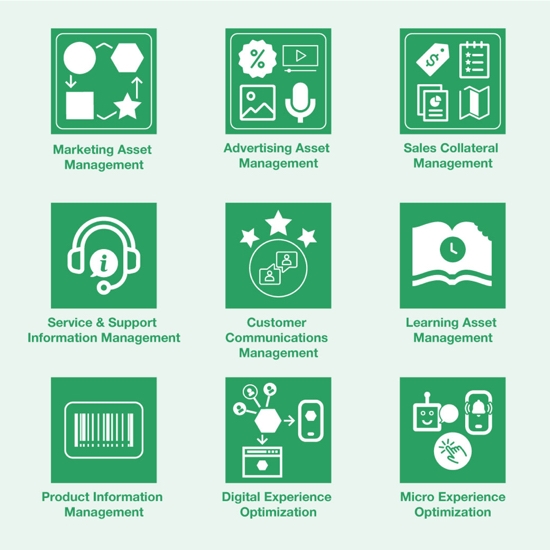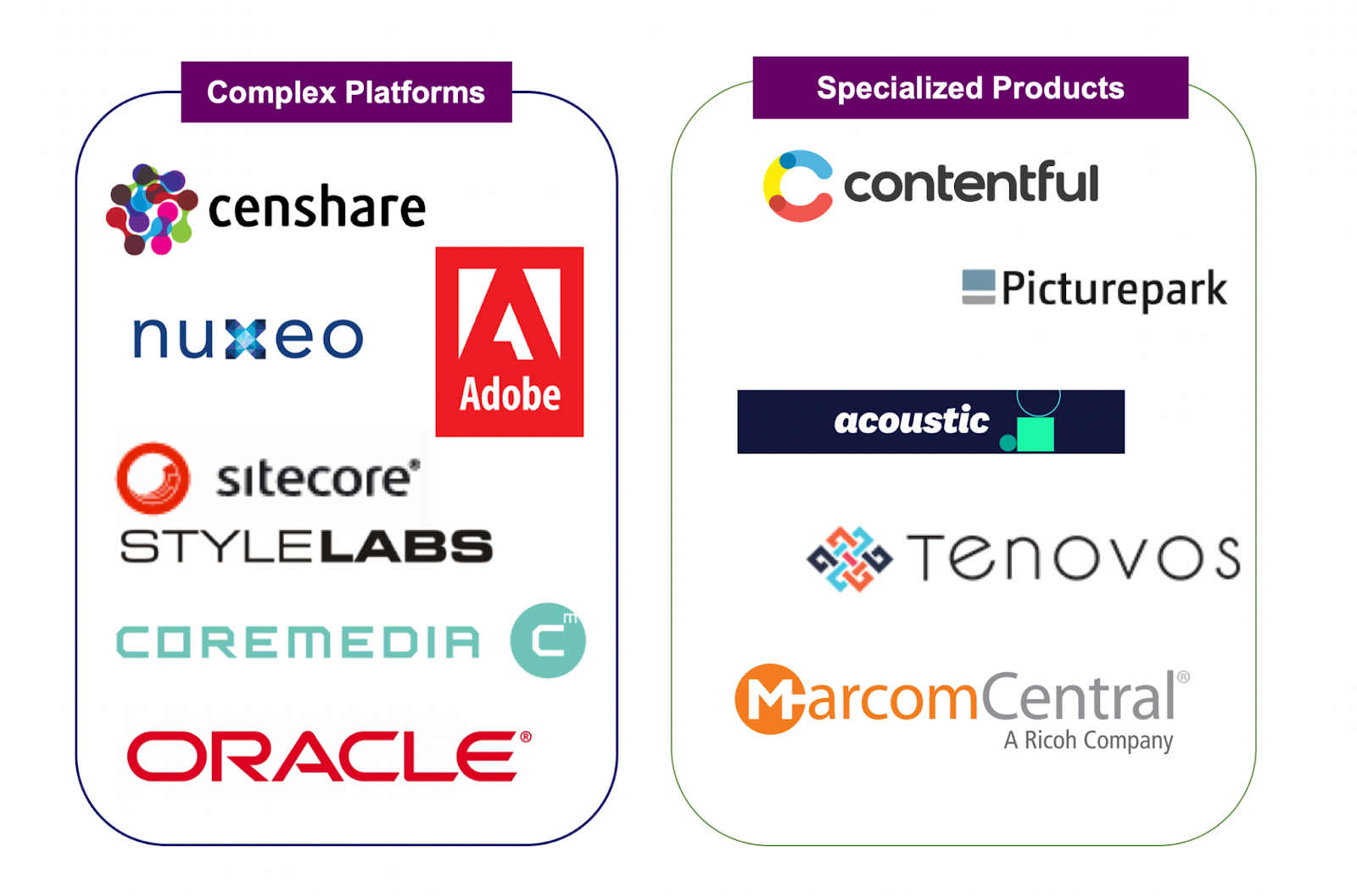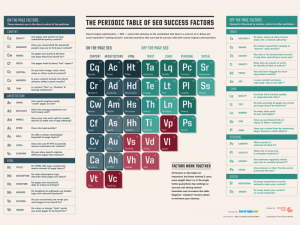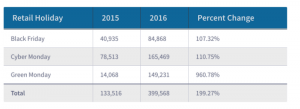Omnichannel content platforms will likely not replace your existing content management systems—but co-exist with them.
Everyone knows that content technology represents a key piece in the martech stack. The past five years have seen traditional enterprise content management (ECM) vendors transitioning from document management to content services platforms, and web content management (WCM) vendors struggling to broaden their scope as mythical “digital experience platforms.” Meanwhile, a parallel, and potentially a more interesting, trend has been taking place on the content side of the martech world.
Over the past half-decade, Real Story Group has seen the rise of a new category of platforms designed to supply core content to the ever-growing channels of customer engagement. After extensive research, we’ve labeled this modern class of tools as omnichannel content platforms (OCPs). Emerging primarily from the digital asset management (DAM) arena, the headless web content management and marketing asset management markets have supplied some key concepts.
Business use cases
The purpose of an omnichannel content platform is to act as a single source of truth for a highly curated set of reusable, enterprise-wide information assets, such as text, data and media. An OCP manages and distributes just the core assets of an enterprise — not all assets, but a select subset needed to provide consistent customer experiences across channels.
OCPs try to solve the problem of divergent customer experiences and messaging when content gets tightly bound to a specific engagement channel, like your website, email platform, sales force automation platform, or customer support portal. Omnichannel content platforms can provide the infrastructure for process efficiencies and messaging consistency, but they also fuel more personalized customer experiences.
At RSG, we evaluate OCP vendors according to nine generalized use cases.

As you’d find with most marketplaces, the typical OCP vendor will only excel at three or four use cases, so it’s imperative to prioritize your most important business objectives when considering these tools. Also, in some cases, the OCP will deliver those services, while in other cases it will just provide the core content building blocks to be assembled somewhere else by a third party or other channels.
Underneath the OCP covers
At their core, OCPs are component content management systems. However, unlike the technical documentation platforms of the past, they’re built for the media and data-centric marketing era. A key design principle is that text, media and data are all first-class objects. Contrast this with more traditional approaches where, for example:
- In documentation systems, images remain bound to text.
- In most ECM and DAM platforms, structured text and data are subsidiary extensions to files rather than independent objects.
The keyword here is “objects.” To support complex data models with compound assets and sophisticated where-used analysis, an omnichannel content platform needs to be object-oriented, both in code and repository. This is why most of them are built on graph-type datastores.
What gets managed in those datastores? To support specific business scenarios around aggregating assets into specific experiences, an omnichannel content platform needs to support content at an atomic, component level. The types of component assets could include:
- Micro-content (e.g., offer copy, email blocks or text messages).
- HTML micro-experiences (e.g., widgets).
- Document assets (e.g., PowerPoint decks).
- Digital assets (e.g., infographics).
- Video assets (e.g., short video snippets).
- Audio assets (e.g., podcasts).
- Data assets (e.g., coupon codes, pricing, offers and product data).
As discussed previously, the OCP may or may not assemble these assets into compound deliverables. Still, at a minimum, it should make them available and track their reuse (where the asset gets deployed as-is) and derivation (where the asset gets modified for a specific context).
Derivation is an important feature in an omnichannel world where context often gets set at the edge of the customer experience. For example, you may modify a core re-usable video snippet differently for Facebook than for Twitter, let alone a partner website. The omnichannel content platform needs to track these derivations so that, for example, when the core “parent” asset gets modified, downstream “children” owners get notified.
The OCP marketplace
This is a small, but growing, marketplace. Like most emergent technology markets, you can roughly divide omnichannel content platform offerings into more extensible and complex platforms versus simpler or specialized products.

This looks like a wide-open marketplace, but a few caveats are in order.
- Major vendors – Acoustic, Adobe, Contentful, Nuxeo (now at Hyland) and Oracle – have largely failed to provide unified solutions with object-oriented asset management services; many people consider them OCPs, but they typically come up short.
- Smaller players like Picturepark, Tenovos, and MarCom Central have decent offerings, albeit less robust.
- Sitecore’s “Content Hub” offering is separate from its flagship “XP” WCM platform and comes via the acquisition of Brussels-based Stylelabs.
The future of omnichannel content platforms
Omnichannel content platforms will likely not replace your existing content management systems—but co-exist with them. Like many omnichannel services, an OCP becomes an enterprise-wide layer underneath your other content and engagement platforms. You should remain suspicious about any existing content/asset management solution in your stack playing this role. You’ll find them either too bound to a specific engagement channel or too restricted in terms of information types and model extensibility.
This space is also expanding rapidly as enterprises pay more attention to customer experience across channels. With analog solutions for core customer data (customer data platforms) and decision/rule engines (journey orchestration engines) at an enterprise-wide tier, OCPs that unify the management, delivery, and tracking of reusable information assets will become increasingly important.
The post The rise of omnichannel content platforms appeared first on MarTech.
(33)
Report Post








